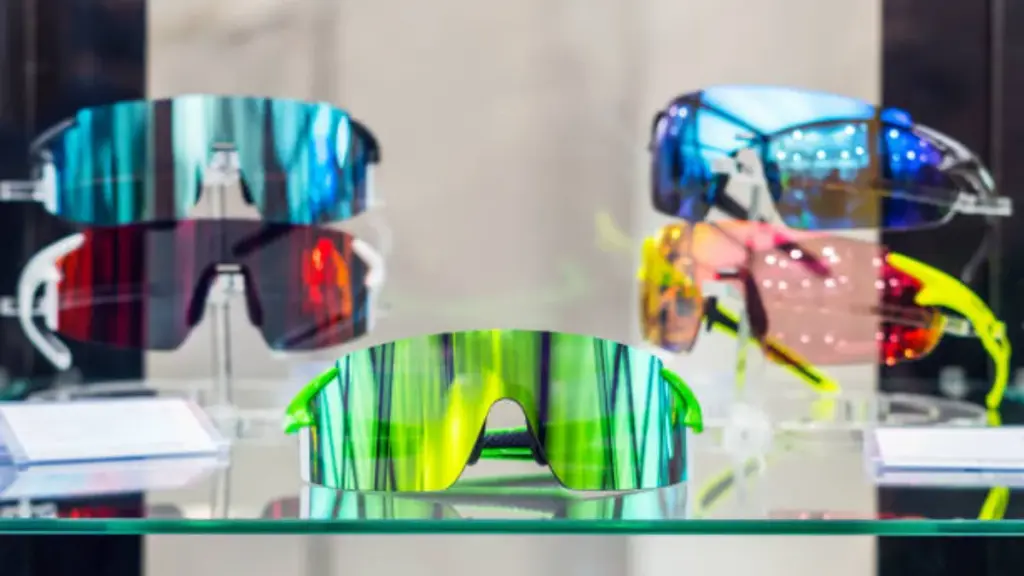What Makes Sunglasses Marketing Trends Unique?

Eyewear marketing is different from other fashion products because it blends style, functionality, and health benefits. Consumers purchase sunglasses for UV protection, outdoor activities, or to complement their fashion choices. Unlike apparel, where trends change every season, sunglasses maintain classic designs while incorporating fresh seasonal trends.
Another unique factor is the strong influence of celebrity endorsements and influencer marketing. People often choose eyewear styles based on what their favorite influencers, actors, or athletes wear. Additionally, technological advancements like blue light protection, AR try-ons, and smart sunglasses play a significant role in marketing strategies.
If you want to dominate the sunglasses market, staying ahead of these trends and adopting innovative marketing approaches is essential.
13 Ways To Make Your Eyewear Brand Stand Out on Social Media
Understand Your Target Market

Before launching any marketing campaign, you need to know who your customers are. The sunglasses market is diverse, and different demographics have distinct preferences:
- Fashion Enthusiasts – Look for stylish, trendy designs influenced by celebrities.
- Athletes & Outdoor Adventurers – Need high-performance, durable sunglasses with UV protection.
- Business Professionals – Prefer sleek, elegant eyewear suitable for formal wear.
- Travelers & Beachgoers – Want polarized sunglasses for comfort and protection.
By understanding your audience’s needs, you can tailor your marketing strategy to maximize appeal.
Build a Strong Brand Identity

A strong brand identity makes your business recognizable and trustworthy. Here’s how to establish a lasting impression:
Create a Unique Brand Story
Storytelling is prominent in many marketing strategies because it makes your product exciting and triggers an emotional response. Your eyewear can also tell a story, whether it is a story about your brand or a fictional tale of power and fashion that make your product more desirable.
Design an Eye-Catching Logo & Packaging
Visual appeal is crucial in the fashion industry, as it helps establish brand identity and attract attention. A well-designed logo and packaging reflect the quality and style of your sunglasses, making them stand out on shelves or online platforms.
Use Consistent Branding
Branding is your way of signing your product so that social media users who see your images know that it is your product. Branding includes using the same colors, styles, models, and fonts to tie all your content together.
Consistency builds brand loyalty, making customers more likely to return for repeat purchases.
Leverage Social Media Marketing

Social media platforms like Instagram, Facebook, TikTok, and LinkedIn provide powerful tools to market your sunglasses business.
- Instagram & TikTok – Focus on high-quality images, reels, and influencer collaborations.
- Facebook – Run targeted ads and engage with communities.
- LinkedIn – If targeting B2B clients, showcase your business expertise and wholesale opportunities.
A well-planned social media strategy will amplify your brand visibility and drive sales.
Content Marketing for Sunglasses Business

Content marketing helps build authority and educate your audience. Consider these strategies:
- Blog Posts – Write about eyewear trends, styling tips, and UV protection benefits.
- Video Content – Create tutorials on choosing the right sunglasses for different face shapes.
- SEO Optimization – Use keywords like “best sunglasses for summer” to attract organic traffic.
High-quality content positions your brand as an industry expert and boosts customer engagement.
Influencer & Affiliate Marketing Strategies

Influencer marketing is a game-changer in the eyewear industry. Collaborate with:
- Micro-Influencers (10K–50K followers) – More affordable, highly engaged audiences.
- Macro-Influencers (100K+ followers) – Greater reach and brand awareness.
- Affiliate Marketers – Offer commissions to bloggers and influencers who drive sales.
A successful partnership can significantly enhance your brand’s credibility.
Running Effective Paid Advertising Campaigns

Paid advertising is key to scaling a sunglasses business by reaching the right audience. Google Ads targets high-intent buyers searching for specific terms like “best UV protection sunglasses” and “affordable polarized eyewear.” By bidding on relevant keywords, your brand can increase visibility and drive traffic.
Facebook and Instagram Ads offer advanced targeting based on demographics and interests, with retargeting ads being effective in converting visitors. Instagram’s visual appeal is great for showcasing sunglasses, using influencer collaborations and carousel ads to maximize ROI.
Seasonal & Trend-Based Marketing Strategies

Seasonality significantly impacts the sunglasses industry, with summer being peak season. Running campaigns with limited-time discounts, collaborating with influencers, and highlighting UV protection are key to attracting buyers. Holiday promotions like Black Friday and Christmas offer opportunities for bundled deals and exclusive collections.
Email and SMS campaigns can remind customers about upcoming sales. Limited-edition collections create urgency, with influencer or celebrity collaborations attracting fashion-forward buyers. Promoting scarcity like “Only 500 pairs available!” boosts urgency and ensures your brand remains trendy and relevant year-round.
Enhancing Customer Experience

Exceptional customer service leads to higher retention rates. Offer:
Integrate AR and VR Experiences
A key reason consumers still prefer shopping for eyewear in physical stores is the ability to try on glasses before purchasing. However, modern technology now enables e-commerce stores to replicate this experience. Many eyewear brands utilize augmented reality (AR) and virtual reality (VR) to enhance online shopping.
AR allows users to see how glasses look on their face by overlaying a virtual image through their camera and a filter. VR, on the other hand, creates a fully digital shopping experience, enabling users to try on glasses using an avatar or an uploaded image.
Hassle-Free Returns
A hassle-free return policy builds trust and increases sales by assuring customers they can return sunglasses easily. Keep policies clear: specify the return timeframe, product condition, and refund options. Offer prepaid return labels, low-cost or free returns, and fast refunds (3–5 days). Simplify the process with one-click returns and instant store credit.
Promote exchanges over refunds with incentives. Clearly display the return policy on product pages and emails. A smooth return experience enhances customer confidence, boosts loyalty, and encourages repeat purchases, ultimately driving long-term business success.
Utilizing Email & SMS Marketing

Email and SMS marketing help boost customer engagement and repeat purchases. Welcome emails create a strong first impression with discounts for new subscribers. Personalized offers recommend products based on past purchases, while flash sales and holiday promotions drive urgency.
Loyalty programs reward repeat buyers with exclusive discounts, and post-purchase follow-ups encourage reviews and brand engagement. Keep messages concise, mobile-friendly, and compelling. A well-executed strategy ensures direct communication with customers, strengthening brand loyalty and maximizing conversions.
Conclusion
Starting a sunglasses business requires creativity, consistency, and strategic planning. By leveraging social media, influencers, content marketing, and data-driven advertising, you can successfully build a thriving eyewear brand. Stay ahead of trends, engage your audience, and provide an outstanding shopping experience—success will follow.
Now, it’s time to put these strategies into action and make your sunglasses brand shine!
FAQs
What elements should I include in my brand’s story?
Your brand story should highlight your values, mission, and unique selling proposition. It should evoke emotions and connect with your target audience.
Which social media platforms are best for marketing sunglasses?
Instagram and TikTok are ideal for visual content, Facebook for targeted ads and community engagement, and LinkedIn for B2B opportunities.
Why is it important to monitor social media analytics?
Monitoring analytics allows you to see what strategies are working, and what strategies are not, so that you can improve your marketing.





















